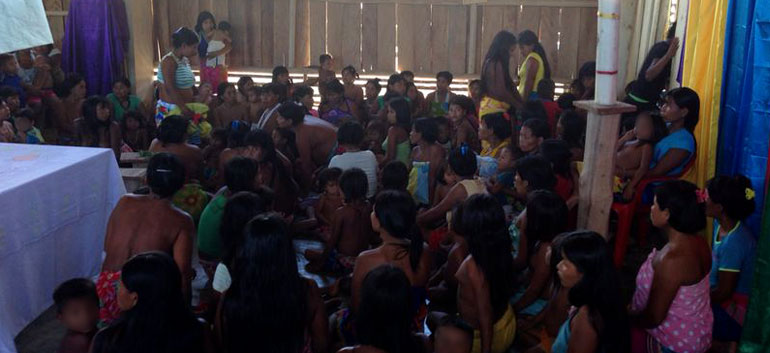Nearly 2,600 people have been displaced in the western state of Choco since Saturday, amid clashes between leftist guerrilla and Colombia’s most powerful neo-paramilitary organization, says the local human rights official.
Referring to the situation as a “humanitarian crisis, the regional ombudsman Luis Erique Abadia, told the radio network RCN on Thursday that no assistance had arrived for the displaced communities.
“On behalf of the ombudsman’s office we are requesting urgent attention, for the communities who at this moment require nourishment, medicine, and comprehensive care,” Abadia told RCN.
A report released by the regional ombudsman’s office on Monday revealed that nearly 2,600 people from 22 different communities have been forced to flee their homes in the region since the fighting began.
“There are 13 people are missing, nine adults and four children, we are trying to verify what happened to these people,” Abadia added.
The mass displacement was caused by a recent outbreak in fighting between Colombia’s second largest guerrilla group, the ELN, and the country’s most powerful neo-paramilitary group, Los Urabeños.
MORE: Displacement at levels of ‘humanitarian emergency’ in western Colombia: Ombudsman
On Monday, the Early Warning System (SAT) of Colombia’s ombudsman’s office reported mass displacement in the western state of Choco, with the worst affected areas being the areas of Las Delicias, Batatal and Puerto Misael.
The preliminary statistics report 17 affected communities with numbers of those at risk being 300 in Las Delicias, 250 in Batatal and 150 in Puerto Misael. All of those at risk belong to communities of African descent.
The majority of those affected live on the banks of the Dubaza river and have been forced to leave their homes to escape the violence.
Many members of these communities have left as the isolation of their communities leads to a lack of available food if the armed conflict stops them from leaving their homes.
Some of those affected reported not being able to leave their homes for days and having to cover themselves with mattresses to avoid being hit by bullets when they were caught in the crossfire.
FACTSHEET: Urabeños
According to the Ombudsman’s report, a tentative truce had existed between the ELN and the region’s paramilitary associated drug traffickers, who operated on behalf of the neo-paramilitary group, the Rastrojos.
FACTSHEET: ELN
In November 2013, the region’s drug traffickers — formerly associated with the Rastrojos — switched allegiances to the Urabeños, now considered Colombia’s most powerful neo-paramilitary group.
The ELN however maintained its alliance with the Rastrojos — whose power is rapidly waning — leading to a resurgence in fighting which intensified throughout the past week.
The Choco region is of strategic importance to the country’s armed groups, due to its access to coastal drug routes and the widespread presence of coca cultivation and illegal mining.


